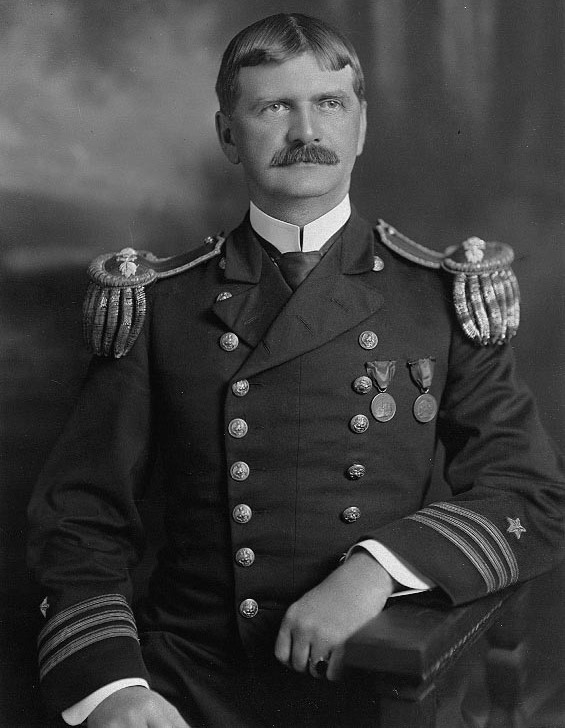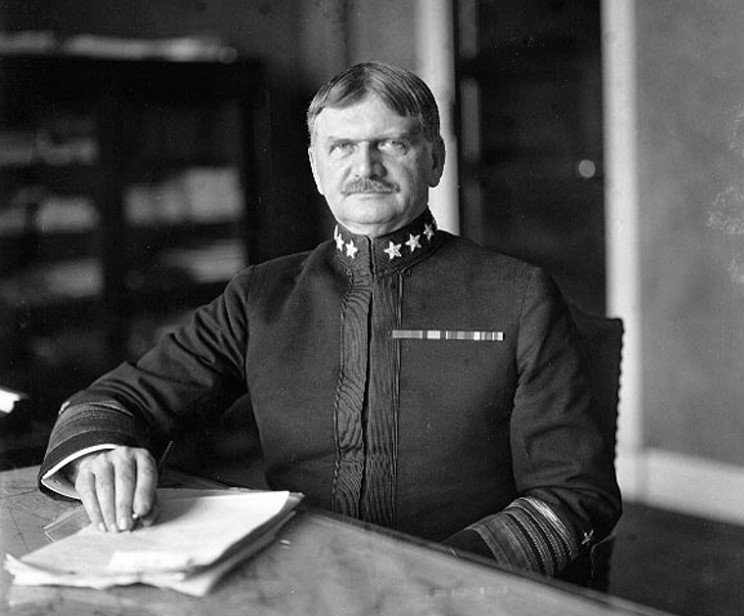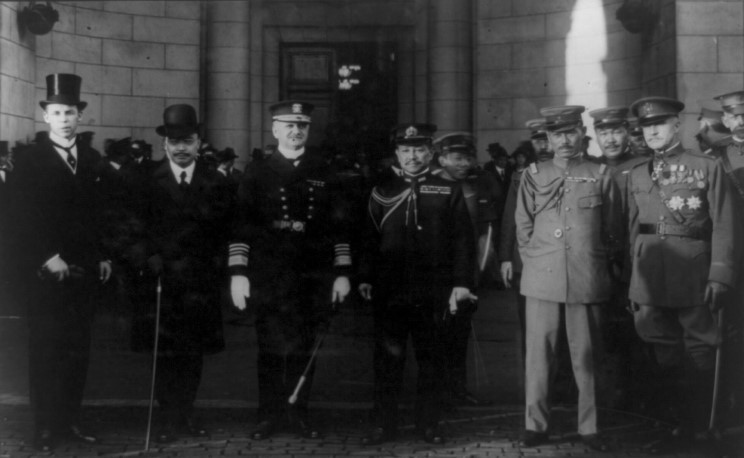Admiral Robert Edward Coontz USN |
|
(1864-1935) |
 |
December 1910: Commander Robert E. Coontz
|
 |
1919: Admiral Robert E. Coontz as Chief of Naval Operations.
|
 |
October 24, 1921: The Japanese Delegation in Washington D.C. From left to right: Robert Woods Bliss, Baron Shiushara, Admiral Robert E. Coontz, Admiral Kato, General Tanaka, General Andre W. Brewster. |
Robert Edward Coontz was born in Hannibal, Missouri on 11 June 1864. He graduated from the U.S. Naval Academy in 1885 and served at the Navy Department and in several ships over the next decade, among them vessels stationed in Alaskan waters and the Great Lakes. He returned to the Navy Department late in 1894 to work on updating officer records, then was assigned to the cruiser Philadelphia, the Coast Survey and the cruiser Charleston. His time in the latter included Spanish-American War service in the Pacific. Following further duty afloat and ashore, Coontz, then a Lieutenant Commander, was Executive Officer of the battleship Nebraska during the 1907-1909 world cruise of the "Great White Fleet". After promotion to Commander in 1909, Robert E. Coontz was Commandant of Midshipmen at the U.S. Naval Academy. In 1912-14, he was Governor of Guam. Captain Coontz then served as Commanding Officer of the battleship Georgia, followed by duty as Commandant of the Puget Sound Navy Yard and the 13th Naval District. He held those positions until late in 1918, enhancing a reputation as an effective administrator. Following a brief period as acting Chief of Naval Operations, Rear Admiral Coontz assumed command of a battleship division in the Atlantic. Coontz had just been assigned to the Pacific Fleet in September 1919 when he was selected to become Chief of Naval Operations, succeeding Admiral William S. Benson. His term as CNO was marked by unceasing pressure for economy, Congressional unhappiness over base closings, diplomatic efforts to achieve naval limitations, internal Navy Department conflicts over organization and the best ways to manage new technologies, plus the naval fallout of the Teapot Dome scandal. While dealing successfully with these problems, Admiral Coontz was also able to establish a unified United States Fleet and strengthen the CNO's position within the Navy Department. Relieved as CNO in mid-1923 by Admiral Edward W. Eberle, Coontz was able to return to sea as Commander in Chief of the U.S. Fleet. In 1925, he led the fleet on a trans-Pacific visit to New Zealand and Australia, the first massed deployment of American battleships since the "Great White Fleet" cruise nearly two decades earlier and a valuable demonstration of their strategic reach. From October 1925 until his retirement in June 1928, Coontz served as Commandant of the Fifth Naval District, reverting to the rank of Rear Admiral. He remained active after retirement until suffering a series of heart attacks in 1934. Admiral Robert E. Coontz died on 26 January 1935. |
(Text courtesy of the USNHC)
|
USS Admiral R.E. Coontz AP-122 |
||
Page created Feb 14, 2008 |